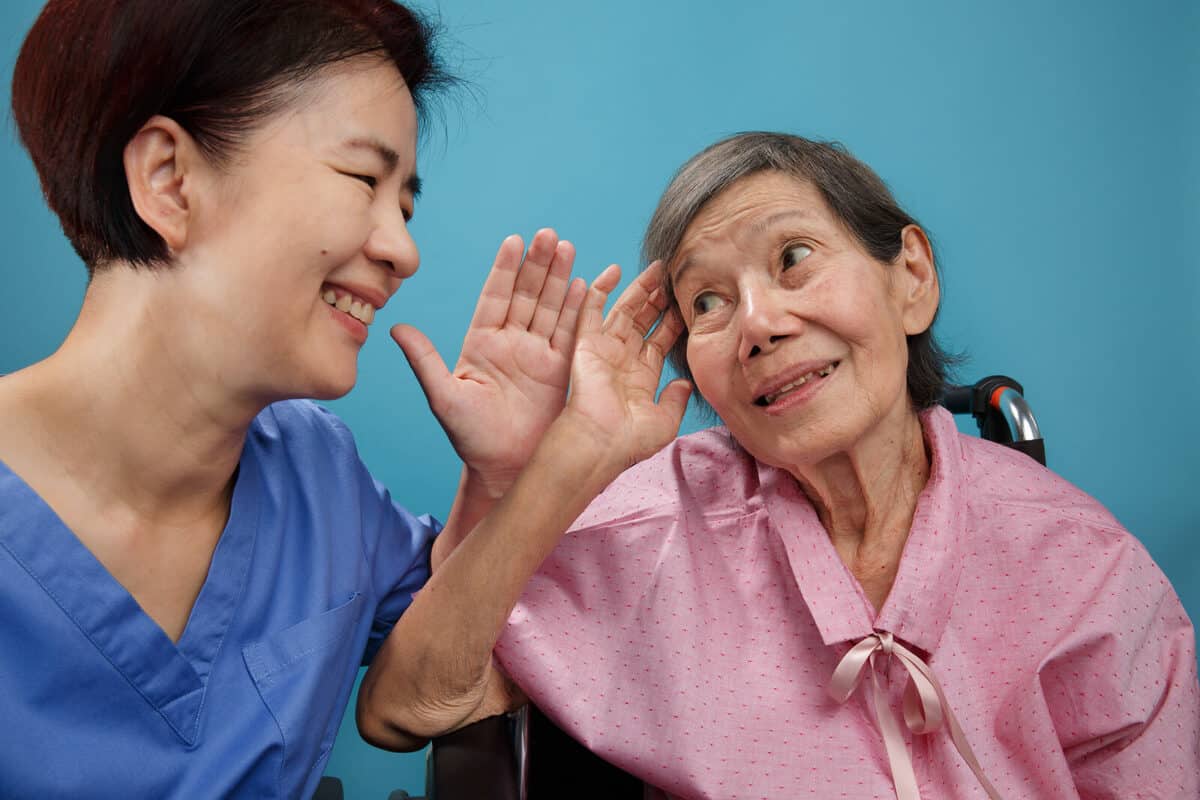- Embracing Invisible Hearing Aids - October 20, 2024
- Alerting Devices for Hearing-Impaired Users - October 6, 2024
- The Benefits of Regular Hearing Screenings - September 18, 2024
Sensorineural Hearing Loss
Sensorineural hearing loss is the third most common, chronic, health condition that older adults live with today. According to the National Institute on Deafness and Other Communication Disorders (NIDCD): 1 in 3 adults, ages 65-74, have some degree of hearing loss. This increases to half of all adults, 75 and older, who have disabling hearing loss. Though hearing loss is pervasive among older adults, it is still widely undertreated. Learning more about this type of hearing loss and how you can intervene helps you protect your hearing health, contributing to a greater quality of life.
Causes
There are several ways that sensorineural hearing loss can occur. The following factors are among common causes of this type of hearing loss:
- Aging: the medical term for age related hearing loss is presbycusis. The risk of developing presbycusis increases with age. This can be caused by a cumulative toll of loud noise exposure, changes to the ear, or medical conditions that are linked to hearing loss and also impact older adults disproportionately.
- Loud noise: one time or regular exposure to loud noise can permanently damage the sensory cells in the inner ear. This reduces their capacity to effectively process incoming sound waves which results in the brain receiving less auditory information.
- Illnesses: extensive research shows that several medical conditions increase the risk of developing hearing loss. Examples include high blood pressure, diabetes, heart disease, and osteoporosis.
- Head injuries: trauma to the head can cause hearing loss by damaging integral components of the auditory system – sensory cells, bones, eardrum, auditory nerve etc.
Other causes of sensorineural hearing loss include inner ear disorders, chronic ear infections, autoimmune conditions, and ototoxic medications.
Symptoms
Sensorineural hearing loss reduces ability to hear and process speech as well as sound. This includes experiencing the following symptoms:
- Sounds are slurred or muffled, people’s voices sound distorted.
- Difficulty hearing individual words.
- Having a hard time hearing in places that are noisy.
- Tinnitus: a ringing or buzzing sound in one or both ears.
- Frequently asking others to repeat what they said or to speak louder.
- Struggling to hear higher pitched sounds, “th” or “sh” for example.
- Turning up the volume on the TV and/or other electronic devices like your phone.
- Being able to hear better out of one ear than the other.
- Lip reading to help identify individual words.
- Pretending to hear just to get through a conversation.
These symptoms can be mild or more prominent, depending on the degree of sensorineural hearing loss you are experiencing.
Types
There are different ways that sensorineural hearing loss can be experienced. Different types include:
- Bilateral: this type describes hearing loss that is relatively even in both ears which is the most common way people experience sensorineural hearing loss.
- Unilateral: occurs when one ear can hear normally while the other ear experiences hearing loss. This includes single-sided deafness which is when one ear has profound hearing loss while the other can hear within the normal range.
- Asymmetrical: this type of hearing loss describes both ears having hearing loss but hearing in one ear is more impaired than the other.
Additionally, there is sudden sensorineural hearing loss (SSHL) which is hearing loss that occurs rapidly. This type of hearing loss usually occurs within a 72-hour period and is usually caused by exposure to extreme sound (fireworks, gun fire, explosion etc.), injury, or illness that occurs suddenly.
Diagnosis & Treatment
There are different tests that hearing healthcare specialists use to diagnose hearing loss. This includes pure tone audiometry and speech testing which are painless tests. These processes involve sounds (or speech) being played at different frequencies while you wear headphones in a soundproof room. You will be asked to indicate what you can hear by raising your hand or pressing a button. This process will identify the softest sounds and speech you are able to hear and the sounds that are more challenging for you to detect. Your results will show the degree of hearing loss you are experiencing in each ear.
Once your hearing needs are identified, your provider will tailor treatment to meet those needs. The most common treatment for hearing loss is hearing aids which are innovative devices that process sound. Treating hearing loss not only strengthens hearing and communication but it also improves social life, relationships, and overall health/
Contact us today to make an appointment for a hearing consultation.

